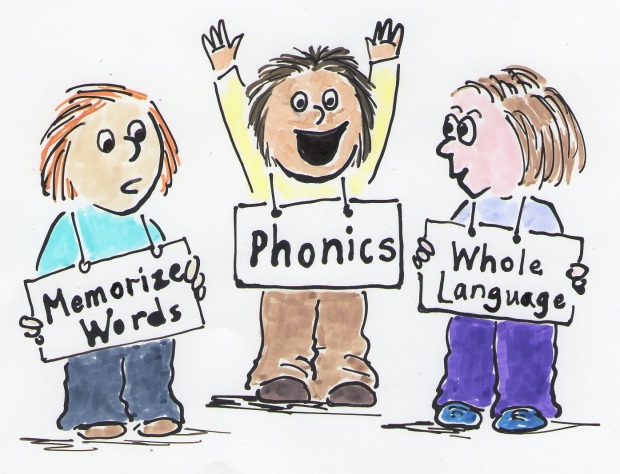
There are many different approaches to phonics instruction. A review of research conducted by (Stahl, Duffy-Hester, & Shahl, 1998) describes several traditional and contemporary phonics approaches. The authors note that phonics is only one part of reading instruction and stress the importance of teaching reading comprehension and other literacy related skills in addition to the teaching of phonics.
Here are a few approaches of phonics instruction to consider:
- Analogy-based
- Analytic
- Embedded
- Spelling-based
- Strategic
- Synthetic
- Systematic
- Whole Language
Education.com defines six approaches of phonics instruction and provides other related resources.
How can educators support English Language Learners to develop phonics skills?
A review of several research studies found that ESOL students that received phonics instruction also made growth in other areas of reading development. The synthetic approach was a particularly effective approach to teaching phonics instruction to ESL students (Jamaludin, Alias, & Johari, 2014).
Other helpful tips for teaching ELLs
- Build in additional time for Systematic instruction
- Allow for wait time for processing information
- Encourage the use of think-aloud strategies to analyze and solve problems
To learn additional research related finding and suggestions to help parents and educators support their child’s phonological awareness, read this article.
Words Their Way is a program, which allows you to differentiate instruction based on each student’s knowledge of sound-symbol relationships.

Here is a helpful phonics website that provides management tips and activities when implementing the Words Their Way program.
This Reading Rockets.com lists 5 key components of reading instruction. The section on phonics specifically addresses considerations educators should make when teaching ESL students.
Check out Jan Richardson’s website, which has many printable documents that you can use to enhance student learning. Cynthia Columbo, one of the authors of the diverse literacy community blog has met and planned a lesson with Jan Richardson. Cynthia has found her embedded approach to teaching phonics instruction to help her students achieve significant learning gains. Jan Richardson’s website also provides direct links to research she conducted when working with students in diverse learning communities. This reading program aims to teach struggling readers in grades K-8.

Note: “The Next Steps in Guided Reading,” is not a phonics curriculum. The program does use have a guided word study component, which helps teachers to match phonics activities to their student’s instructional reading level. These activities include word analogies, picture sorts, and, building and manipulating words using magnetic letters. All you have to do is scroll down to the word study section and click on the printable documents you desire!